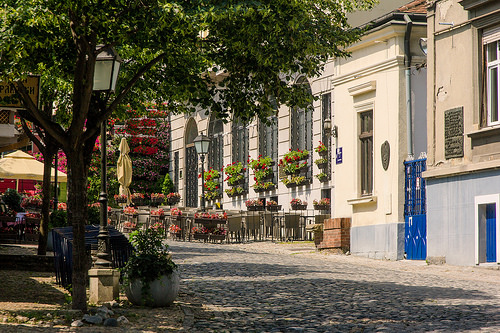 Today’s destination is just to the east of where we left off in Bosnia-Hercegovina, the newly-minted country of Serbia. The Republic of Serbia officially became an independent country in 2006 when it split from Montenegro. Of course the region’s history goes back much farther. Seventeen Roman emperors were born in the area today occupied by Serbia and many built palaces or left monuments to commemorate their place of birth. Given its geographical location, Serbian history is a mix of cultures, ethnicities and religion. Today, Serbia is a warm, welcoming place with a strong reputation for fun.
Today’s destination is just to the east of where we left off in Bosnia-Hercegovina, the newly-minted country of Serbia. The Republic of Serbia officially became an independent country in 2006 when it split from Montenegro. Of course the region’s history goes back much farther. Seventeen Roman emperors were born in the area today occupied by Serbia and many built palaces or left monuments to commemorate their place of birth. Given its geographical location, Serbian history is a mix of cultures, ethnicities and religion. Today, Serbia is a warm, welcoming place with a strong reputation for fun.
Two citadels top the list of things to see in Serbia. The first, Petrovaradin Citadel is nicknamed the Gibraltar of the Danube and is located in Novi Sad, just north of the capital Belgrade. Novi Sad itself seems worth a visit, even if citadels aren’t your thing. All the attractions are easily reached on foot along a pedestrian thoroughfare and there are plenty of outdoor cafes to indulge your people-watching passions.
The second citadel of note is in Belgrade. Kalemegdan has been fought over more than a hundred times and destroyed over forty times. My favorite quote about this place comes from Lonely Planet’s travel website: (https://www.lonelyplanet.com/serbia/belgrade/sights/military/kalemegdan-citadel) “The fort's bloody history, discernible despite today's plethora of jolly cafes and funfairs, only makes Kalemegdan all the more fascinating.” Belgrade, by the way, is touted as one of the world’s wildest party destinations. Sounds like a perfect meet-cute setting for a romantic comedy.
Once you’re partied-out, you can make a trip to Studenica Monastery, one of the most sacred sites in Serbia. Founded in 1190 by then prince, now saint, Stefan Nemanja, the monastery continues operation today while welcoming visitors. Perversely, the fourth suggested attraction on the list is a trip to Devil’s Town in the southern part of Serbia. It’s actually a cluster of 202 natural stone pyramids which loom over a bright-red, highly acidic mineral stream. I’ve seen the pictures, it’s not all that scary.
If man-made architecture is more your thing, then a day-trip to Subotica should be on your itinerary. Art-nouveau is mixed with Serbian and Hungarian flavors and the city has been called one of the most beautiful in the country. And then there are the nearby lakes Palic and Ludaš, both extremely shallow. Ludaš has an average depth of 1 meter and the water temperature reaches up to 30C in summer.
It seems that partying or festivals are the real draw for visiting Serbia. Novi Sad hosts EXIT, Serbia’s largest music festival. Belgrade is known for its exuberant nightlife. And evidently sipping posh cocktails in the antiquated alleyways of Niš is a thing. I’d like it to be my thing.
So, there you have it, Serbia. See you back here in October. And if you’ve enjoyed this blog don’t hesitate to subscribe and/or sign up for my free monthly newsletter where I give away books, post exclusive excerpts…and there may be a cocktail recipe every now and again as well. Cheers!
photo credit: Skadarska Street, Belgrade via photopin (license)
